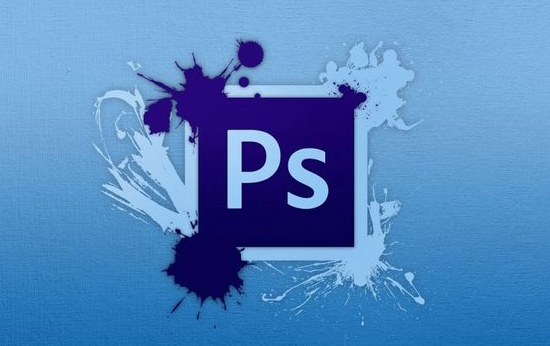Adjustment layer is the core tool used for non-destructive editing in Photoshop. It is superimposed on the original image without changing the original pixels, and supports flexible adjustments such as color, brightness, and contrast. Common types include curves, color levels, color balance, saturation, black and white, etc. Select to use by clicking the "Create new fill or adjust layer" button in the layer panel. The biggest advantage is that local adjustments are achieved through masks. For example, after adding the "curve" adjustment layer, use the brush tool to erase specific areas (such as faces) on the mask, and only darken the background. In addition, mixing modes such as "Soft Light" and "Overlay" can be set to enhance the expressive effect, and some photographers use the "Color" mode to unify the tone style. Practical tips include: Hold down the Alt key and drag the mask to achieve the same mask for multiple adjustment layers; check "Create clipping mask with the previous layer" to limit the adjustment range; right-click to copy existing adjustment layers to quickly apply them to other files, and the efficiency is significantly improved when batch processing of photos. Mastering these methods can greatly improve color grading efficiency and maintain image quality.

Adjusting layers is one of the most practical features in Photoshop, especially for non-destructive editing. It allows you to flexibly adjust color, brightness, contrast, etc. without affecting the original image. If used well, it is not only efficient, but also more convenient to modify later.

What is a adjustment layer?
Simply put, the adjustment layer is a kind of effect layer "overlapping on the original image" that will not directly change the original pixel. You can think of it as a filter film, covering it on the picture, only affecting the visual presentation and not changing the negative.

Common types include:
- Curves
- Levels
- Color Balance
- Saturation (Hue/Saturation)
- Black & White, etc.
You can click the "Create a new fill or adjust layer" button (a black and white circular icon) in the Layers panel to select the corresponding adjustment type.

How to use adjust layer color tuning?
The biggest advantage of adjusting layers is that they can apply adjustment effects locally, which is mainly achieved through its mask. For example, if you want to make the background of the photo darker, but keep the brightness of the character's face unchanged, you can do this:
- Add a Curve adjustment layer
- Using the brush tool, use black on the mask to erase the unwanted parts (such as faces)
- Only the background will darken and the characters will remain the same
This method is more flexible and easier to modify repeatedly than directly applying the adjustment tool on the layer.
In addition, you can also set different blending modes for the adjustment layer, such as "Soft Light" and "Overall" to enhance the expressiveness of the effect. Some photographers like to use the "color" blending mode to achieve uniform tone, which not only retains the light and dark structure, but also unifies the color style.
Several practical tips for adjusting layers
- Multiple adjustment layers can share one mask : hold down the Alt key (Windows) to drag the mask onto another adjustment layer, and they can share the same area control.
- Limit adjustment range : After selecting the adjustment layer, check "Create clipping mask with the previous layer" so that it will only work on the lower layer, not all layers.
- Quick copy has been adjusted : Right-click the existing adjustment layer, select "Copy Layer", and paste it in other files to use it, so as to save the parameters re-adjustment.
- It is especially useful when batching a set of photos : If you have a set of photos with similar styles, you can first make adjustments on one layer, and then copy the adjustment layer to other documents to unify the style with one click.
Although these little tricks seem simple, they are very practical in actual work, especially when making series or editing pictures, which can save a lot of time.
Basically that's it. Master the use of adjustment layers, Photoshop's color grading efficiency will be greatly improved, and it can also keep the image quality from being damaged.
The above is the detailed content of How to use adjustment layers in Photoshop. For more information, please follow other related articles on the PHP Chinese website!

Hot AI Tools

Undress AI Tool
Undress images for free

Undresser.AI Undress
AI-powered app for creating realistic nude photos

AI Clothes Remover
Online AI tool for removing clothes from photos.

Clothoff.io
AI clothes remover

Video Face Swap
Swap faces in any video effortlessly with our completely free AI face swap tool!

Hot Article

Hot Tools

Notepad++7.3.1
Easy-to-use and free code editor

SublimeText3 Chinese version
Chinese version, very easy to use

Zend Studio 13.0.1
Powerful PHP integrated development environment

Dreamweaver CS6
Visual web development tools

SublimeText3 Mac version
God-level code editing software (SublimeText3)

Hot Topics
 How to transfer an Adobe Acrobat license to a new computer?
Jul 04, 2025 am 12:01 AM
How to transfer an Adobe Acrobat license to a new computer?
Jul 04, 2025 am 12:01 AM
To transfer the Adobe Acrobat license to a new computer, you must first log out on the old device and release the activation permission, and then complete the activation with the new computer login account. The specific steps are: 1. Open Acrobat on the old computer and click on the avatar or "Help" > "Log out" to log out; 2. Download and install Acrobat for the new computer and log in with the original account to automatically identify the license; 3. If the activation fails, check the network, clear the cache, unbind the old device through the Adobe account page, or contact customer service to solve the problem. The key point is to ensure that the old device has been logged out, clear the local cache and update the online device list before the migration can be completed smoothly.
 How to create a custom brush in Photoshop
Jul 08, 2025 am 01:01 AM
How to create a custom brush in Photoshop
Jul 08, 2025 am 01:01 AM
The steps to create a custom brush in Photoshop are as follows: 1. Select a pattern with clear edges and suitable for brushes, such as hand-painted textures or photo parts, and adjust it to the appropriate size; 2. Use the "Magic Wand Tool" or "Quick Selection Tool" to remove the background to ensure that the pattern is in an independent selection; 3. Create a basic brush through "Edit > Define Brush Presets"; 4. Adjust the parameters such as "Shape Dynamic", "Scatter", "Text" and "Transfer" in the "Brush" panel to make the strokes more natural; 5. Finally, click "Save As Brush" to save as a .abr file for convenience of subsequent use and sharing.
 How to use the quick selection tool in Photoshop
Jul 06, 2025 am 12:01 AM
How to use the quick selection tool in Photoshop
Jul 06, 2025 am 12:01 AM
Photoshop's quick selection tool is suitable for selecting areas with similar colors and clear boundaries. The usage methods include: 1. Find and activate the tool, right-click or long-press to switch or press the shortcut key W to ensure that the layer is unlocked; 2. Adjust the brush size, combine the Alt or Option key to switch the selection mode, Shift key to add selection, and improve accuracy through the option bar setting sampling method; 3. Use the "Select the Subject" function to assist in selection, and then manually optimize edge details, especially suitable for portraits or product images.
 How to recover a corrupted AutoCAD file?
Jul 09, 2025 am 01:16 AM
How to recover a corrupted AutoCAD file?
Jul 09, 2025 am 01:16 AM
When AutoCAD file is corrupted, you can take the following steps to try to restore: 1. Check the automatic backup of the file, check whether there is a .bak or .sv$ file in the folder where the original .dwg file is located, and rename the .bak file to .dwg to open it; 2. Use the RECOVER command to try to repair the file, and if it fails, use the -OPEN command to open the file for partial recovery; 3. Use third-party tools such as DataNumenDWGRepair, RecoveryToolboxforDWG, etc. to deal with seriously damaged files. To prevent future damage, you should save regularly and use "Save As" to refresh the file structure, keep the software updated, avoid saving through network drives, enable automatic save and set up
 How to remove password protection from a PDF in Adobe Acrobat?
Jul 05, 2025 am 12:36 AM
How to remove password protection from a PDF in Adobe Acrobat?
Jul 05, 2025 am 12:36 AM
To remove PDF password protection, use Adobe AcrobatPro and have the document owner password. The steps include: 1. Open Adobe AcrobatPro and select a password-protected PDF file; 2. Enter the correct owner password; 3. Go to "Tools" > "Protection" > "Encryption" > "Remove Security"; 4. Click "OK" in the pop-up window to confirm the removal. If AcrobatPro is not available, you can ask others for assistance or use third-party decryption tools, but you need to pay attention to privacy risks. Common problems include invalid password, grayed out security settings, and prompting for passwords after removal. The solution is to check password input, try to convert file formats, or update software versions. If it cannot be resolved, please contact A
 How to fix remote desktop connection issues
Jul 08, 2025 am 01:03 AM
How to fix remote desktop connection issues
Jul 08, 2025 am 01:03 AM
Remote Desktop connection problems can be checked through the following steps: 1. Check the network and firewall settings to ensure that the TCP3389 port is open; 2. Confirm that the remote desktop function is enabled and supported by non-home version systems; 3. Verify user permissions and belong to the "RemoteDesktopUsers" group or administrator; 4. Handle black screen or lag, adjust the display options or restart the remote computer. Check them one by one in order, and most problems can be solved.
 How to get Photoshop for free
Jul 12, 2025 am 12:34 AM
How to get Photoshop for free
Jul 12, 2025 am 12:34 AM
Adobe Photoshop does not have a permanent free version, but can be legally used in the following ways: 1. The official website provides a 7-day free trial, complete functions but automatic renewal is required; 2. Use a simplified version based on the browser (Beta), which supports basic editing functions; 3. Students or teachers can obtain a full-featured version through the school education plan; 4. Consider alternative software such as GIMP, Photopea, Krita or Canva Pixlr to meet daily needs. The above methods can meet the needs of different users and ensure legal and compliant use.
 How to use the magnetic lasso tool in Photoshop
Jul 04, 2025 am 01:00 AM
How to use the magnetic lasso tool in Photoshop
Jul 04, 2025 am 01:00 AM
The magnetic lasso tool is suitable for images with obvious edge contrast. The key points include: 1. Use the shortcut key L or select the tool from the tool group. After clicking the starting point along the edge of the object, slowly move the mouse, and the tool will automatically absorb and add anchor points; 2. In terms of parameter settings, the width is recommended to be set to 10~30, and the edge contrast is default. The higher the frequency, the more anchor points; 3. In actual application, other tools can be replaced in the blurred edges. Zooming the image will help with accurate selection. If necessary, the anchor points can be adjusted manually. Mastering these skills can effectively improve the efficiency of the selection.






